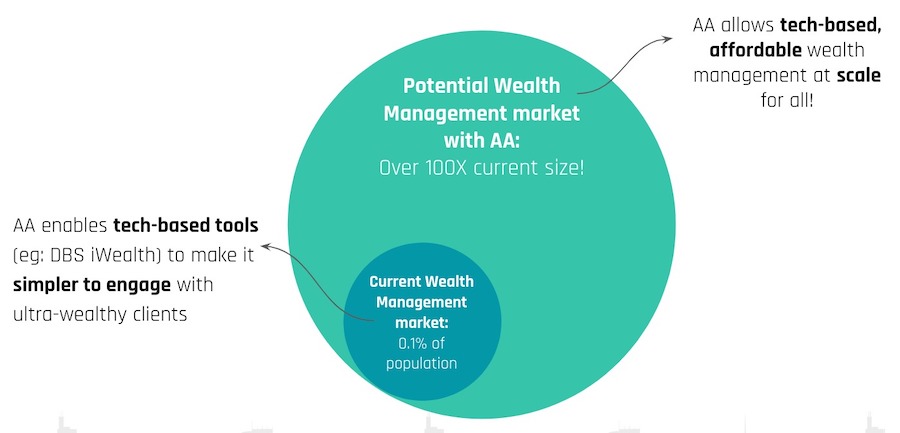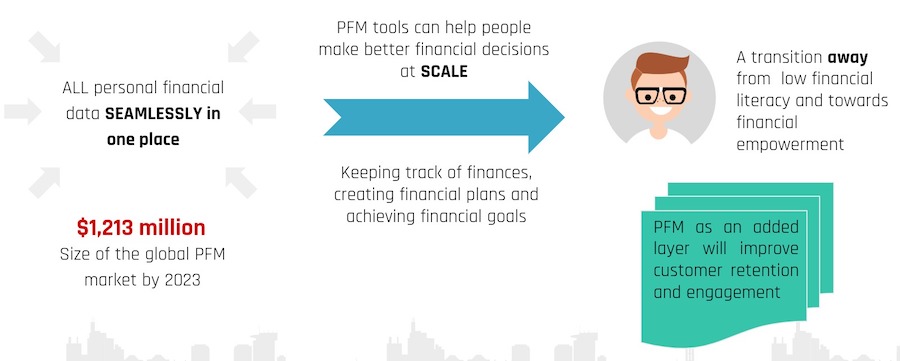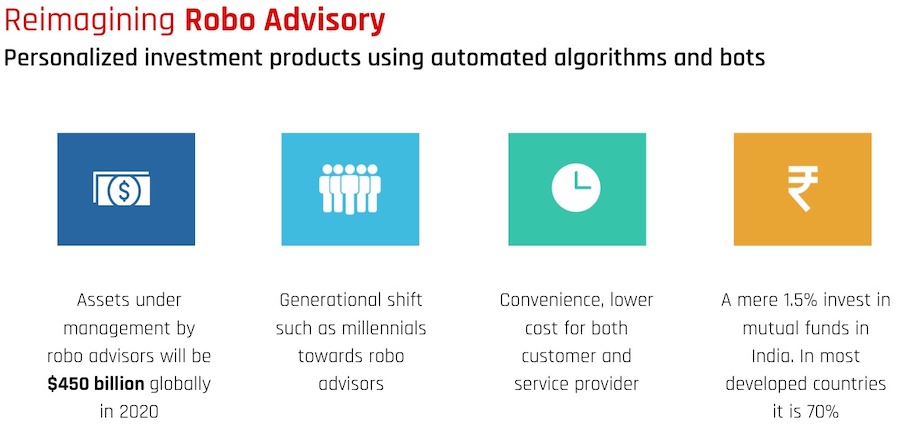Use Cases For Account Aggregator Framework
There are several use cases Financial Information Users (FIU) can build in the Account Aggregator ecosystem. The conventional use cases listed below are already in production today but not very efficient. The following use cases when onboarded to Account Aggregator ecosystem can change things dramatically.
- Lending
- Wealth Management
- Personal Finance Management Apps
- Robo Advisory
- Reconciliation of Accounts
While we have listed four Use Cases we strongly believe many players will innovate on new products and services which were not originally considered.
1. Lending Use Case
In today’s world, a borrower provides their banking & other data to the lender either by giving hard copies or PDF documents. This method is not ideal as it is time-consuming for the borrower to collect the data to be submitted, the lender has to process the data using screen scraping method. Also, such documents are not tamper-proof.
Banks and NBFCs should use the mega opportunity of AA to increase the velocity of safe lending.
- AA is an unblocker to speedy data access, allowing them to process more loan applications faster
- Lenders using Account Aggregators can receive data of the borrower in real-time and data is digitally signed by the Financial Information Provider (FIP), for e.g. the borrower’s bank.
- AAs can help lenders DERISK their loan book. Reduce NPAs!
- Lenders can offer their customers more personalized and customized loan products.
- And the most important feature of AA – LOAN MONITORING. Lenders now can monitor loan accounts post-disbursement for early intervention and lower loan loss provision.
1.1 Cash Flow Lending
When it comes to credit bureau files in India,
- 30 million individuals have thick files, i.e. there is a good amount of data to come up with a credit score.
- 100 million have thin files
- A whopping 1 billion have NO file.
AAs allow lenders to access underserved segments: Only 8% of MSMEs in India have access to formal credit! Lend based on cash flow lending of the borrower’s business, a new big opportunity in the unsecured lending.
The AA framework in conjunction with the upcoming Public Credit Registry (PCR) enables lenders to offer sachet sized loan based on the cash flow of the business.
2. Wealth Management Use Case
The wealth manager’s in India largely depend on their client to submit data on a periodic basis. The client has a choice to share the credentials with the wealth manager by which sharing of the data is no longer a problem for the client but this is not the right way to share data.
A data principal (wealth manager’s client) can give a recurring Consent to an account aggregator to share data from select FIPs with the wealth manager. This method has several advantages,
- The data principal doesn’t have to share the FIP’s credentials (login, password)
- The wealth manager is not dependent on their client to share data
- The data received by the wealth manager is in digital format, this can be fed directly to the wealth manager’s platform which can generate actionable reports.
The wealth management market size in India is small, it ought to be far bigger. AAs can help in growing this market size as wealth managers can devote more time on getting more clients while technology will aid them in their day to day operations

3. Personal Finance Management Apps Use Case
The usage of personal finance management (PFM) apps in India is dismal. Possibly most believe we “know our finances” and don’t need anyone’s help. There are a few PFM apps in India which get access to your bank account statements by one of the following methods,
- User uploads PDF documents
- User shares the login credentials with the app
Both the above methods are bad, especially the second one if you care about privacy.
An individual makes about 200 financial decisions in their lifetime – choosing a bank to open a savings account, home loan, personal loan, buying/selling mutual funds, insurance policies. Good PFM apps help individuals make better financial decisions based on their own data. It is important for PFM apps not to be just graphically presenting the data but also give actionable reports.

3. Robo Advisory Use Case
Robo Advisory apps are in a nascent stage in India. Millennials prefer Robo advisory type solutions. There is a lot of technology behind Robo advisory and if their algorithms are good and constantly updated one can expect very good actionable reports.

These days many in India are investing in Mutual Funds thru Robo Advisory apps. If these apps have real-time access to your financial data the Robo advisor can give far better-informed decisions. A few of the features of Robo advisory apps are listed below.
- Portfolio Assessment and Rebalancing recommendations
- Switch to Direct
- Analytics on Investments
In the current setup, the collection of data is a very cumbersome process, there could be too many hops to acquire, extract and process the data. In the AA world Robo advisors will receive digital data directly from the data fiduciaries (FIPs such as banks, mutual fund depositories, insurance policies).
5. Reconciliation of Accounts Use Case
India has 63 million MSMEs. As per the MSME committee report, they contribute approximately 30% to our GDP. Majority of MSMEs are in the manufacturing sector.
Any well-run MSME would like to close its accounts every day. MSMEs use financial accounting packages such as Tally, Quickbooks etc. The owner or accountant enters all the banking transactions, invoices in the accounting package. It’s a key financial control that helps the owner/proprietor know the true state of cash he/she has in hand.
It must be noted, currently, only entities regulated/registered with any one of the financial regulators can participate in the AA ecosystem.
| Reconciliation in Pre-AA Era | Reconciliation in AA Era |
|---|---|
| MSMEs reconcile between the transactions in their physical books and bank passbooks. | Accounting package downloads bank statements using an Account Aggregator with business owner’s consent. |
| MSMEs started using financial accounting packages and reconciled with bank passbooks or printed bank statements (received by email). | Bank statement data received is in real-time and has no data errors. |
| MSMEs can use financial accounting packages but have to share their net banking credentials or bank statements in diverse formats. | Books Reconciliation happens in real-time with no security risk. In addition, the standardised format of AA solves for the current diversity in bank statement formats. |
| The MSME employs a clerical staff to get the digital statement from the bank and upload it into the accounting software. Since this is not a dedicated job for the person, the quality of reconciliation is not great and hence doesn’t help the proprietor know the amount of real cash the business has. | Books Reconciliation happens in real-time with no human intervention and no security and privacy risks. |
Related Readings